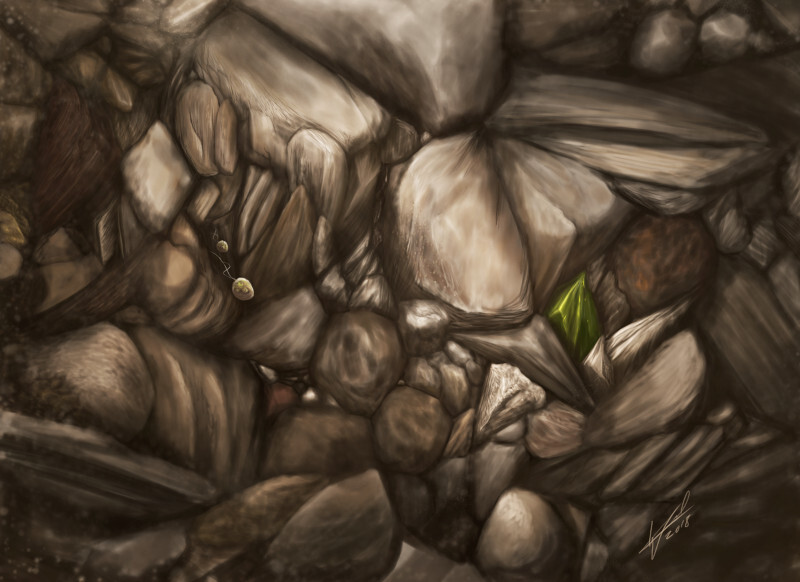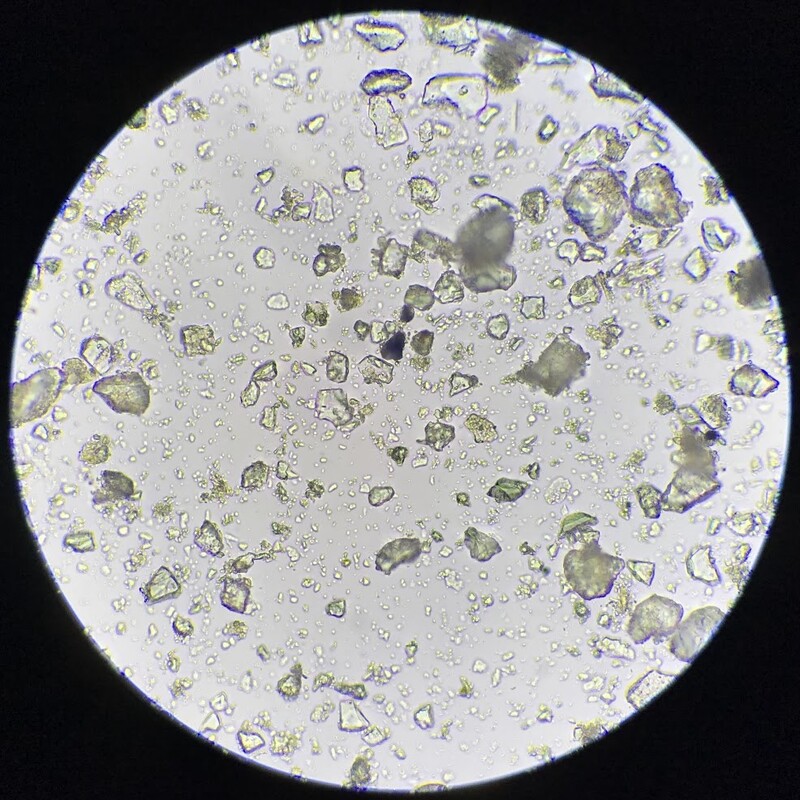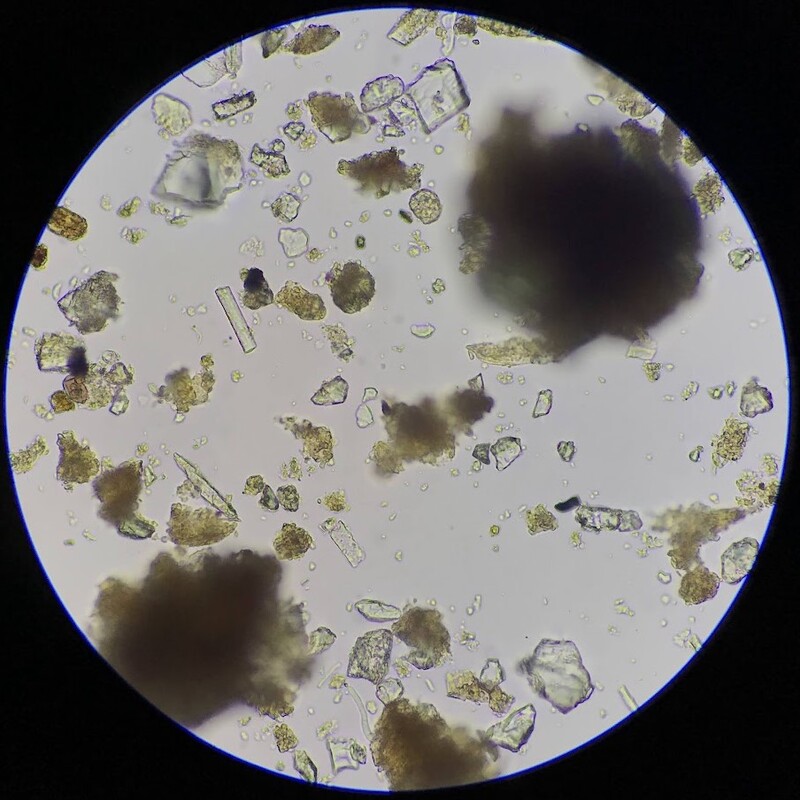
Mineral soil
This soil is in an early stage of ecological succession. It may be forming for the first time from parent rock material, or it may have experienced a severe disturbance. There is very little organic matter; it's a desert-like landscape made up of mostly mineral particles. There is some life here, but diversity is low due to the harsh conditions and the lack of complex habitat, shelter, and resources.
Pioneering bacteria and small flagellates are the main residents of this soil. It's difficult for anything else to survive here. When it rains, the soil is compacted by rain drops and quickly flooded. The water doesn't absorb or drain well, so the microbes may experience intermittent low-oxygen conditions. Since there is so little holding the soil together, the rain will carry much of the loose material away as it flows into streams and rivers, lakes and oceans. Once the sun returns, the compressed soil quickly dries into brick-like clumps, and the temperature can increase dramatically. Microbes that can't find shelter will die or retreat into cysts to wait for the return of moisture.

On the surface, equally hardy pioneering plants are beginning to take root. We often call these plants "weeds" and view them as enemies. They spread quickly, covering the soil and holding it tightly with their roots. They soften the impact of raindrops, and their roots create channels that bring fresh air deeper into the soil. They build a complex economy with the microbes in the soil, and the microbiome quickly diversifies as the habitat becomes richer and food is more available. The increasing microbial activity begins to improve the structure of the soil. Wind, rain and sun are no longer a threat as the habitat becomes more stable and resilient.

If you like this artwork, you can order a print of it here or support me on Ko-fi. For inquiries about DIY prints, licensing, commissions, collaborations or just to share enthusiasm about microbes, please email post@mikroliv.no, or send a message on Instagram. I love hearing from you!


